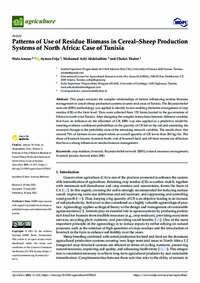Patterns of Use of Residue Biomass in Cereal–Sheep Production Systems of North Africa: Case of Tunisia

Authors:
This paper analyzes the complex relationships of factors influencing residue biomass management in cereal–sheep production systems in semi-arid areas of Tunisia. The Bayesian belief network (BBN) methodology was applied to identify factors enabling the better management of crop residue (CR) at the farm level. Data were collected from 152 farms located in the governorate of Siliana in north-west Tunisia. After designing the complex interactions between different variables that have an influence on the allocation of CR, BBN was also applied as a predictive model by inserting evidence conditional probabilities on the quantity of CR left on the soil and simulating the incurrent changes in the probability state of the remaining network variables. The results show that around 70% of farmers in our sample retain an overall quantity of CR lower than 200 kg/ha. The share of livestock income, livestock herds, cost of livestock feed, and off-farm income are all factors that have a strong influence on residue biomass management
